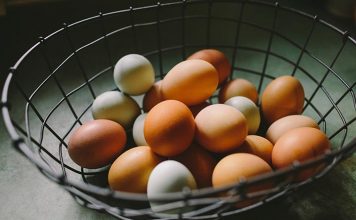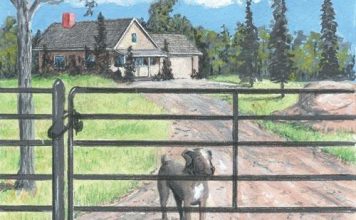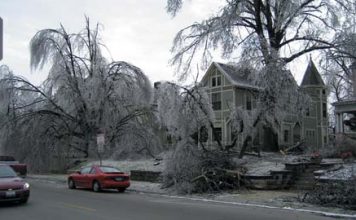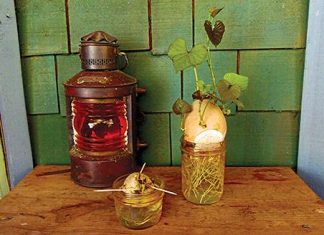| Issue #107 • September/October, 2007 |
Money doesn’t buy happiness but it sure does buy a lot of stuff. If it is nice stuff then you need a place to display it. If it is useful stuff you need to be able to find it easily. Shelves are the best way to do these things. In this article I will give you some ideas about building shelf systems you can customize. These shelves will help you do justice to the stuff you want to display, and store things you need to keep handy.
Box shelves
The first is a box-type shelf system. A basic box-type shelf has sidewalls for structural strength, shelves short enough not to sag under a load, and a depth and height between shelves that matches the contents.
I make the majority of my shelves from common #4 pine boards that are 3/4-inch thick in various widths. These can be built and stained or painted in your workshop, then attached to the wall with screws. Other materials such as plywood, barn boards, or scrap wood work too.
|
It is a good idea to figure out the square footage and dimensions it will take to store your particular categories of goodies, for instance, the 350 cassette tapes you acquired over the years. Determine the linear feet of shelving that is required and how deep the shelf needs to be. In this case you would need a shelf 18½ feet long and about 3 inches deep. A shelf that long is not likely to be practical in most homes, so it can be divided into shorter shelves built one above the other.
The amount of weight box shelves can support depends on three factors. First is the strip of wood attached to the underside back edge of each shelf. Screws attach these strips (and all the parts joined to them) to the wall. All the screws must penetrate the wall studs an inch or two for the most holding power.
The second factor is the strength of the sidewalls and the way they are connected to the shelves. Boards of the same thickness as the shelves work fine for sidewalls too. I use screws to connect them but in fancy shelf units I use finish nails. Be sure the shelves are square with the sidewalls and the house wall.
The third factor is the stiffness of the shelf material. Pine boards work for most shelves, but they will sag if the shelf is long and has heavy things, like books, on it. The strip of wood under the shelf attached to the wall studs gives significant support, but for more support on long shelves I sometimes add vertical pieces, secured with screws to the shelves above and below them. Trim boards can be attached to the front of each shelf for even more support, and they give the shelf units a nicely finished, more formal look.
One more benefit of carefully and accurately built box shelves is the possibility of turning them into cabinets by adding doors as a later project. See issue 98, page 8, and issue 99, page 47 of BHM for some ideas about that.
Triangle-support shelves
The next shelf system is a little more wild and crazy. Each shelf is supported with triangle supports and a support strip under each shelf. Notice the triangle pieces have an offset pad attached to the back with screws. The offset gives clearance for the support strip. The pad rests against the wall directly over the wall studs where the screws attaching it to the wall are driven. Between the triangles and the support strips, both well-connected to the wall studs, you have an exceptionally strong support for a variety of shelf sizes and types. I use this method in my workshop because it is so rugged, versatile, and easy to rearrange.
I also make elaborate shelves for our home’s interior using this method. Shelves can be wrapped around outside corners and fitted into inside corners. The triangles are good places to get creative. Holes drilled through them are great for hanging things. The shelves do not have to be square. I like free-form ones. Sometimes I add lighting enclosures to the shelves, and there is often a potential for building hiding places into the unit.
I have not given measurements for these shelf units because the width, height, and depth dimensions are whatever you need them to be.
The “one board bench”
Many people have something they make or use throughout their life that always gives satisfaction or pleasure. A hunter has a favorite rifle; a good chef has a three-egg omelet; I have the One Board Bench.
This seating bench is very simple to make. A board eight feet long of any width, a few screws, and half an hour is all it takes. The finished bench can be stained, painted, or left natural. I have made them of barn boards, plywood, driftwood, and sawmill planks of various thicknesses. By far my favorite material is ¾ inch thick x 6-12 inches wide pine boards.
After the parts have been cut to size it is a good idea to round off all the corners and edges with sand paper. Since sanding makes me nauseous, I use a sharp utility knife to give the edges a “hewn” look. As time goes on, and your bench collects dings and dents, the utility knife (or sometimes a gouge-type chisel) lets you cut the worn points away to match the rest of the piece.
I usually put a good wood stain on my benches either before or after assembly. Paint is an option, but stain is easier to touch up over time, especially after correcting imperfections from wear, or to bring the bench back to looking new. Materials such as driftwood, mill wood, or plain pine can be left to wear as they will. You can choose how to treat plywood or other materials that need finishing.
Notice the part (which I call the brace) that connects the seat to the legs. This is the piece that gives these benches their great strength. Use three or four long screws per side to attach the brace to the bench legs. You can use finish nails to attach the seat to the legs and centerpiece if you must, but screws are always better.
Some of my benches have straight legs, but my favorite ones have angled legs. Cutting the brace with seven-degree angles on each side gives the bench a stylish but stable look. Cutting the same angle on both ends of the leg pieces completes the job. This makes the joint of the bench and legs look professional and gives a flatter contact surface where the legs rest on the floor.
The bottom edges of the bench legs may damage delicate floors. Adding a “pad” to the legs spreads out the load. These pads also change the height of the bench. Before adding pads and putting the bench into service, check for wobbliness on a flat surface. Cut, plane, or shave the bottom edges of the legs of your bench until it sits solid. After a time a bench might warp a little and need some added leveling attention.
These benches are inexpensive to build, easy to mass-produce, and could be an item to sell as a small business. In my shop I use these benches as sawhorses. I make a bunch of them every so often as gifts. We have about 20 of them around our house that are used as bar stools, plant stands, side tables, stepping stools, and shelves. When visitors come I have enough different height benches so everyone is at a comfortable elevation at the table.
Two benches can support a small piece of plywood to make a useful coffee table. Four of them will support a full-sized sheet of plywood or an old door to become a table. I recommend using a few well-placed screws when putting together a large or small table for stability, whether it is for temporary or permanent use.
I once built a banquet table forty feet long with 12 of these benches and five 4×8 foot plywood panels, covered with red cloth. The next day it all came apart quickly, without any ruined or wasted materials.






















